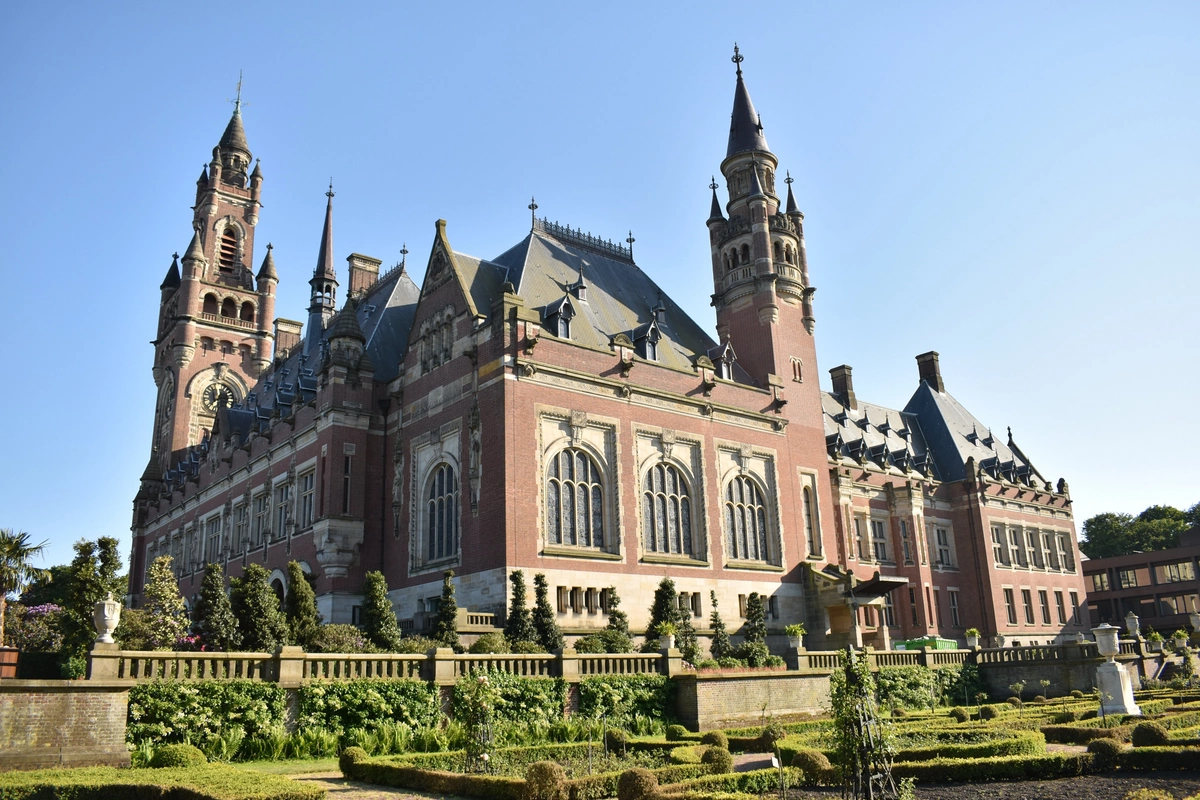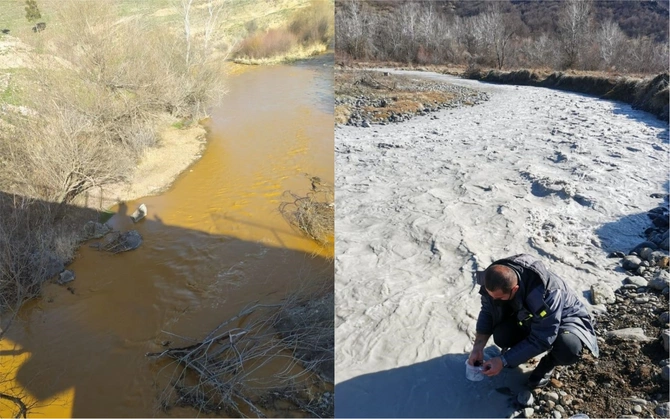
Photo: X/@PCA_CPA
By Tural Heybatov
On February 12, Azerbaijan filed a lawsuit at the headquarters of the Permanent Court of Arbitration in The Hague, initiating an arbitration case against Armenia under the 1979 Bern Convention on the Conservation of European Wildlife and Natural Habitats.
According to Azerbaijan’s Ministry of Foreign Affairs, the lawsuit details numerous violations by Armenia of its legal obligations under the Bern Convention. The statement emphasizes that after reclaiming its territories, Azerbaijan uncovered shocking evidence of Armenia’s environmental destruction and its failure to protect habitats and species in an area known for its rich biodiversity. It was established that Armenia’s actions inflicted severe and irreversible damage to the region’s flora and fauna.
On January 18, 2023, based on collected evidence, Azerbaijan issued an arbitration notice to Armenia, formally initiating the process. The composition of the arbitration tribunal was approved on September 15, 2023, and the first procedural hearing between Azerbaijan and Armenia took place on April 12, 2024, at the Peace Palace in The Hague.

Photo: The Ministry of Foreign Affairs of Azerbaijan
Notably, Azerbaijan’s lawsuit against Armenia marks the first-ever inter-state arbitration case under the Bern Convention. This precedent-setting case is expected to attract widespread attention, as its outcome may establish a significant legal precedent for future environmental disputes.
Under the Convention, each country nominates an arbitrator, with an additional arbitrator chosen by mutual agreement. The Convention also prevents unnecessary delays or attempts to evade proceedings, ensuring that the first hearing took place as scheduled. Decisions are made by a two-thirds majority and are binding on the parties involved.
Azerbaijan is demanding full compensation from Armenia for the large-scale destruction of natural habitats and wildlife. The case includes Armenia’s actions during its occupation of Azerbaijani territories, which severely impacted hundreds of wildlife species and ecosystems characteristic of the region. This includes large-scale deforestation, unsustainable logging, mining operations, and the construction of hydroelectric power plants.
Armenia categorically denies causing any environmental damage in the formerly occupied Azerbaijani territories. However, Azerbaijan, with the assistance of international experts, specialists, and legal professionals, has conducted a meticulous investigation and gathered extensive evidence. It is expected that Armenia will struggle to refute most of these findings. Legal experts suggest that Armenia’s primary defense may be to deny state involvement and shift the blame onto Karabakh separatists. However, Azerbaijan appears well-prepared for this argument. A relevant precedent exists: on June 16, 2015, the European Court of Human Rights ruled in the case of "Chiragov and Others v. Armenia," recognizing violations of property rights, the right to respect for private and family life, and the right to effective legal remedies. The court held the Republic of Armenia-not Karabakh-responsible for these violations.
Moreover, during the occupation, Armenia did little to conceal its activities, likely not anticipating future consequences.
According to Armenian media reports, between 2014 and 2018, over 400,000 cubic meters of forest were cut down in the occupied territories-nearly three times the amount logged in Armenia during the same period. These figures were provided by Armenian environmentalists. Before the occupation, Karabakh and Eastern Zangezur had approximately 220,000-230,000 hectares of forest, of which 54,000 hectares were destroyed. Large portions of Tartar district forests were cleared to build a canal from the Sarsang Reservoir, aimed at depriving Azerbaijani regions downstream of water. The valuable timber from Karabakh and Eastern Zangezur was highly sought after by foreign companies that participated in these illegal activities. Additionally, fertile lands were misused, leading to the erosion of 100,000 hectares of arable land. Many plant and animal species were wiped out in nature reserves and protected areas under Armenian occupation. The total area of specially protected natural zones in the formerly occupied territories spans 43,000 hectares.
Azerbaijan’s findings have been corroborated by the United Nations Environment Programme (UNEP), which confirmed that thousands of hectares of protected and valuable forests were damaged in the formerly occupied territories. These forests contained ancient relic trees, some over 2,000 years old. Certain reserves in these areas were designated for the protection of rare and fragile ecosystems, such as the plane tree forests in the Basitchay Valley. UNEP also reported hundreds of dead fish in the Okhchuchay River and confirmed that mining operations in the occupied territories led to chemical contamination of water, soil, and biodiversity.

The water of the Okhchu River turns yellow and white within a day due to pollution with industrial wastes / Courtesy
The Basitchay State Nature Reserve in Zangilan was established in 1974 to protect the unique floodplain forests of the Arax River (eastern plane trees). During the years of occupation, Armenia altered the river’s course, destroying up to 1,500 hectares of these forests. In 2022, the Cabinet of Ministers of Azerbaijan approved regulations for the Basitchay State Nature Reserve and its sanitary protection zone. The average age of local plane trees is 170 years, with some towering 50 meters high, featuring trunk diameters of up to 4 meters and ages ranging from 1,200 to 1,500 years.
The lawsuit does not disclose the amount of compensation sought, but it is expected to be beyond Armenia’s financial capabilities. What measures will be taken if Armenia loses the case but refuses to pay damages? According to legal experts, in such a scenario, fines will be imposed on Armenian assets in third countries, including bank accounts, real estate, and other holdings.
Share on social media